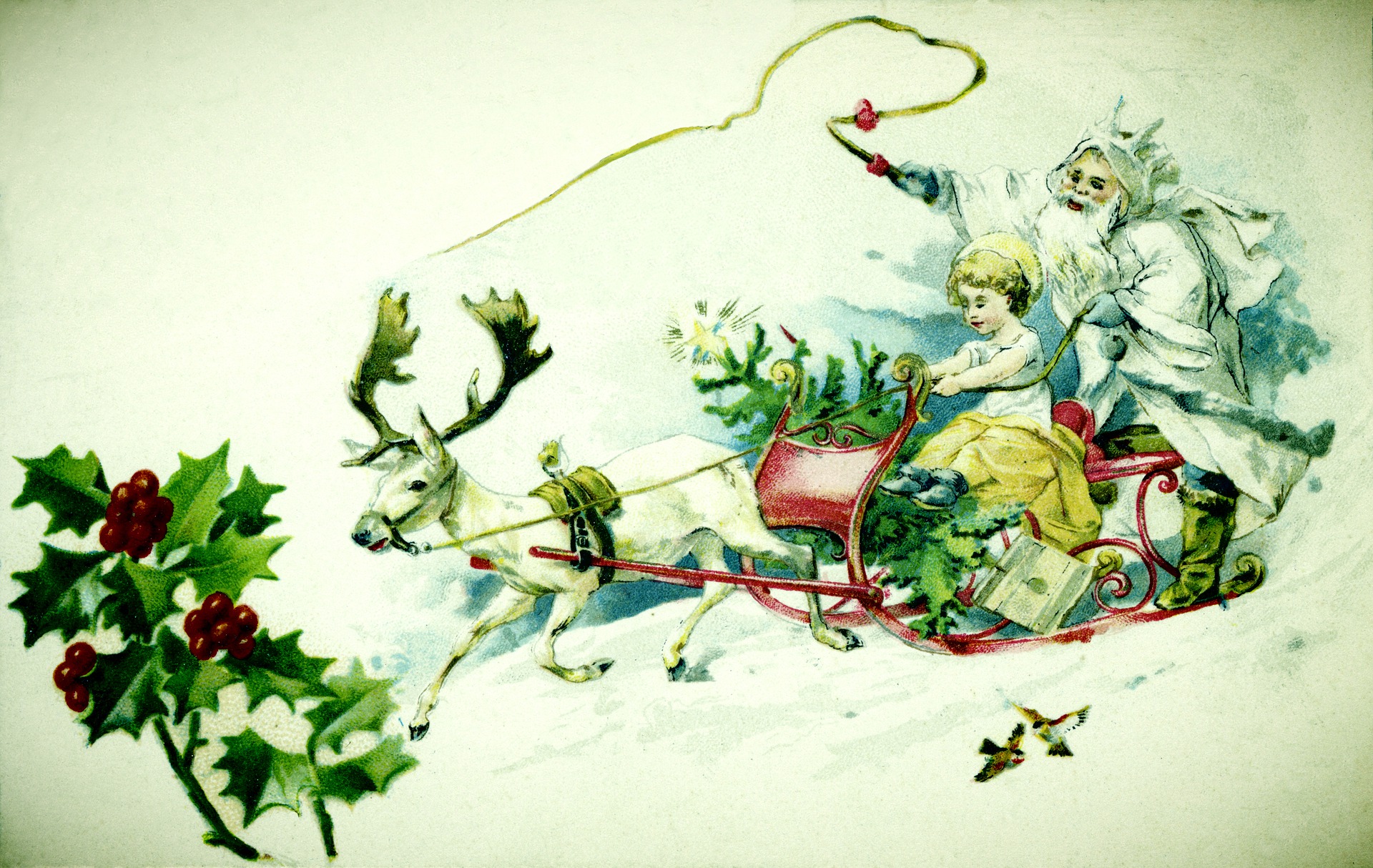
Popular holiday motif, 19th century (Image: Pixabay)
The music of the brook is hushed,
Its restless motion stilled ;
The leaves are faded, fallen, crushed ,
The air with frost is filled ;
The leafless trees look strange and lone,
And wildly toss their arms and moan.
The black-bird’s notes of sturdy cheer
From out the tree-tops ring ;
To drape the earth the clouds draw near,
A fleecy garment bring,
And wrapped in folds of purest white,
We bid the dear old year ” Good- night. “
Sarah E. Howard, Good Housekeeping, Dec 8, 1888
Going shopping these days, especially if you visit your local mall or that cute little store at the street corner, it’s hard not to notice all those holiday ornaments. When you’re rushing home on a rainy day, under the umbrella, you can’t resist seeing a nutcracker watching you from the store window. And classical Christmas tunes quietly play somewhere near. Maybe you won’t stop, but you have to admit that you will at least take a look. That’s the seasonal holidays aesthetics! It attracts and captures attention. I’m also not an exception. Although I don’t like all those flashy and screaming ornaments made of too shiny materials. My preference is calmer aesthetics.
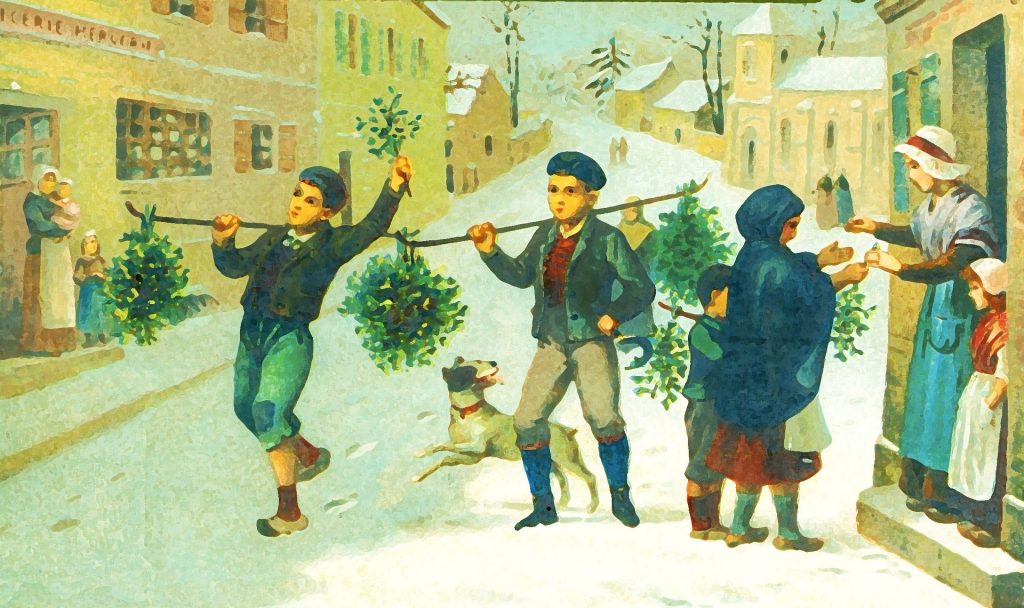
Wooden ornaments, classical music, hot drinks, good company… Sounds simply perfect! And reminds so much of these old times when people enjoyed holidays in a different way. So, here is some vintage seasonal holidays aesthetics…
‘Alas ! poor chin: Seasonal holidays gifts
In the 19th century, gifts were an essential part of a seasonal holidays aesthetics. Christmas gifts were a nice way to show affection, love, respect… Therefore, there was a sort of etiquette in giving Christmas presents.
“I know how many sighs have been breathed over the perplexity and hopelessness of it-but to work. For a pretty shaving banner, take a piece of wide sash ribbon, say 10×8 inches or 6 x 8. The daintiest, most delicate of those are made from cream or white satin. Fringe it out about two inches at the bottom, and then paint a pretty spray of flowers across it, either in oil or water-color, and underneath, in gold, letter some appropriate legend. Here are a few quotations from which you may choose: ‘Alas ! poor chin; ‘ ‘Lord of himself, that heritage of woe;’ ‘Blessings on your flowing beard;’ ‘A clean shave;’ ‘With my compliments to ye shaver;’ ‘To shave or not to shave, that is the question;’ ‘God’s blessing on your beard;’ ‘What a beard hast thou got;’ ‘A beard, fair health and honesty;’ ‘He jests at scars who never felt a wound;’ ‘Be wise to-day, ’tis madness to defer,’” advises a magazine from the 1880s those ladies who didn’t know what present give to a gentleman. There are also other ideas, suitable for diverse men like a cravat sachet for a young gentleman, tobacco pouch, “a handsome mirror with broad wooden frame, prettily decorated” for a bachelor’s room, always useful calendars with the inscriptions like “‘Time and tide wait for no man;’ ‘And still the time rolls on;’ or ‘We live in deeds not years;’”
Of course, there is also gift advice for other family members:
“For ‘Grandma’ there was a nice, soft chair- cushion, (‘Grandma dearly loves to take a little nap in her chair, you know’) that was both comfortable and pretty. It was really two cushions made of China silk tied together at each end and in the middle with inch-and-a half-wide flame-colored ribbon. The design was red and yellow nasturtiums with green leaves on a cream-colored ground.”
“For ‘Mamma’ there was a dainty, pretty tidy, made of linen scrim (‘Linen washes better, you know, than cotton,’ said this wise little maid). It was a yard and a quarter long, hemmed all around sides, and ends, and above the hems at the ends threads were drawn and five rows of narrow ribbon run in -peacock blue, pink, pale green, orange and scarlet.”
For ‘Papa,’ whose business often took him from home, she made a pretty linen traveling case, and duplicated it for ‘Roy, ‘a grown-up brother off at college, for said she, ‘It was nearly as cheap to make two as one, for I was obliged to buy half a yard of heavy brown linen in length and the width just exactly cut two.”
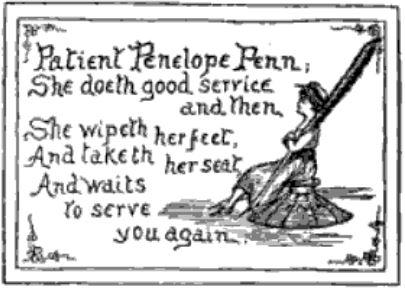
Therefore, there was no better way to express affection, love, or respect than with self-made presents. Only the material necessary was bought.
“Thinking of ‘something pretty and easy to make ‘for a papa or brother’s Christmas gift, a penwiper which ‘is not so bad’ is made of half a dozen leaves of chamois skin cut about as large as a postal card, or carte de visite if a smaller one is preferred, tied together at one end with a narrow ribbon; a nicely lettered rhyme to be drawn on the entire leaf is in one of the St. Nicholas numbers for ’87, running thus: ‘Pretty Peter Penny, everybody’s clerk Always wipes his little feet when he’s done his work.’ “
Christmas Dinner: Solomon’s Temple for Larger Tables
Christmas dinner was an event that combined joy and cheerfulness with a certain dose of ceremonial atmosphere you can feel only during these holidays.
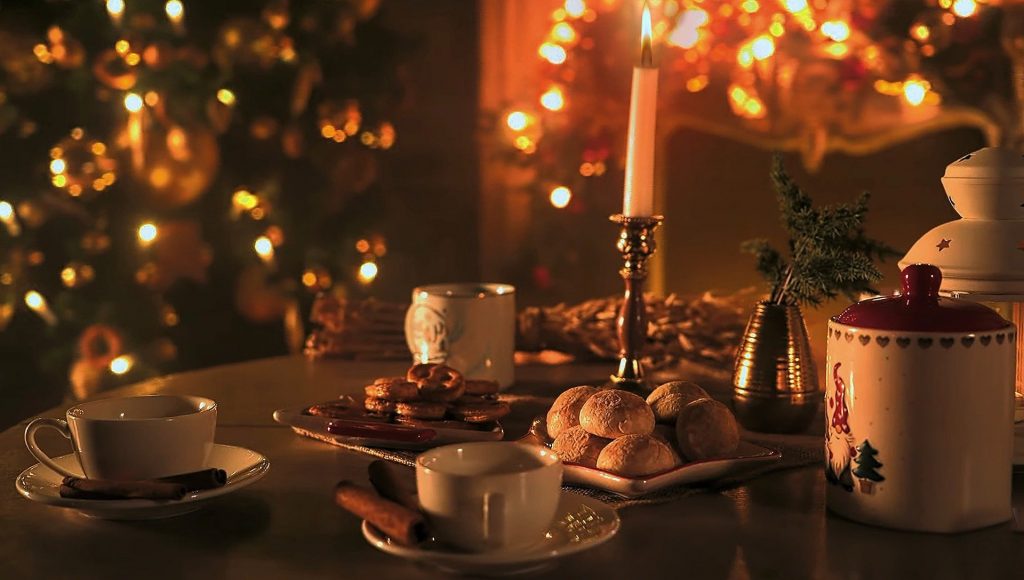
Today, in almost every store, there are hundreds of options if you want to decorate for lunch or dinner. But to impress the guests during the 19th-century seasonal holidays you needed to master the art of preparing these decorations…
“A Dish of Snow. Put twelve large apples in cold water, set them over a slow fire and when they are soft rub them through a hair sieve; put the pulp in a basin. Beat the whites of twelve eggs to a strong froth and sift upon them a half pound of white sugar double refined. Beat the apple pulp to a froth, then stir all together till like a stiff snow. Pile as high as you can on a china dish, set round it an imitation of Chinese rails made of green paste, and put a sprig of myrtle in the center.”
Or, if you wanted to impress your guests with something amazing, you could do this:
“A Fish Pond. Fill your large fish moulds and six small ones with flummery. Take a china bowl and put in half a pint of stiff, clear calf’s- foot jelly; let stand till cold, then lay on two small fishes right side down. Put in half a pint more jelly; when cold, lay the four small fishes crossing each other so that when the bowl is turned upside down the heads and tails may be seen. Fill the bowl nearly full of jelly and lay on four large fish when it has cooled. Fill after this again with jelly and be careful to make it stiff and clear. Let stand till next day, turn out upon a silver salver and place in the middle of the table.”
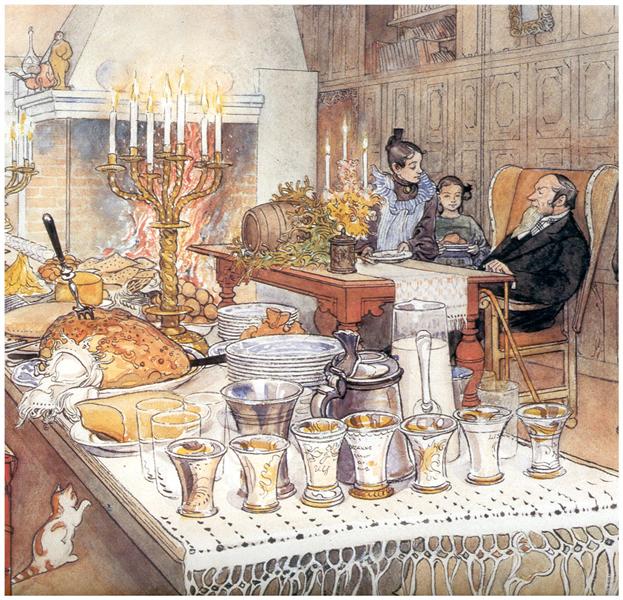
In case the dinner was bigger, with more guests, it wasn’t unusual to find eye-catching decorations on the corner of the table:
“Solomon’s Temple in Flummery. Divide a quart of flummery into three parts. Color one third with cochineal steeped in brandy. Dissolve one ounce of chocolate in strong coffee and mix with another part of the flummery. Wet the temple mould and fill the top with red flummery for the steps , fill the four points with white and the remainder with chocolate. Let it remain till next day, shake loose gently, stick a flower stalk down from the top of every point. Lay round it rock candy sweet meats. This is proper for a corner dish for a large table.”
And one more thing, if you were invited to a formal event or Christmas dinner, a written reply was one of the options to politely confirm your arrival.
“Mrs. Thomas Jones accepts with pleasure Mrs. Thomas Dunn’s polite invitation for Thursday evening next.
Invitations to afternoon teas and receptions, do not require any answer. Guests leave their cards, as they enter the house, or send (their cards) if they are unable to be present on the occasion. In answering any invitation , great care should be taken to do so in a polite and painstaking manner, and one corresponding in form with the original note or card. Thus a written invitation must never receive a verbal answer, and a note written in the third person, must not be answered in the first, or vice versa.”
Christmas Cards for Unique Holidays
There were no proper holiday aesthetics and that seasonal holidays charm without Christmas cards. I know, online cards today are quick and you can send nice words in a matter of seconds. Yes, I do that. More or less, everyone does that. But sending some postal, handwritten cards to a few dear people is different.
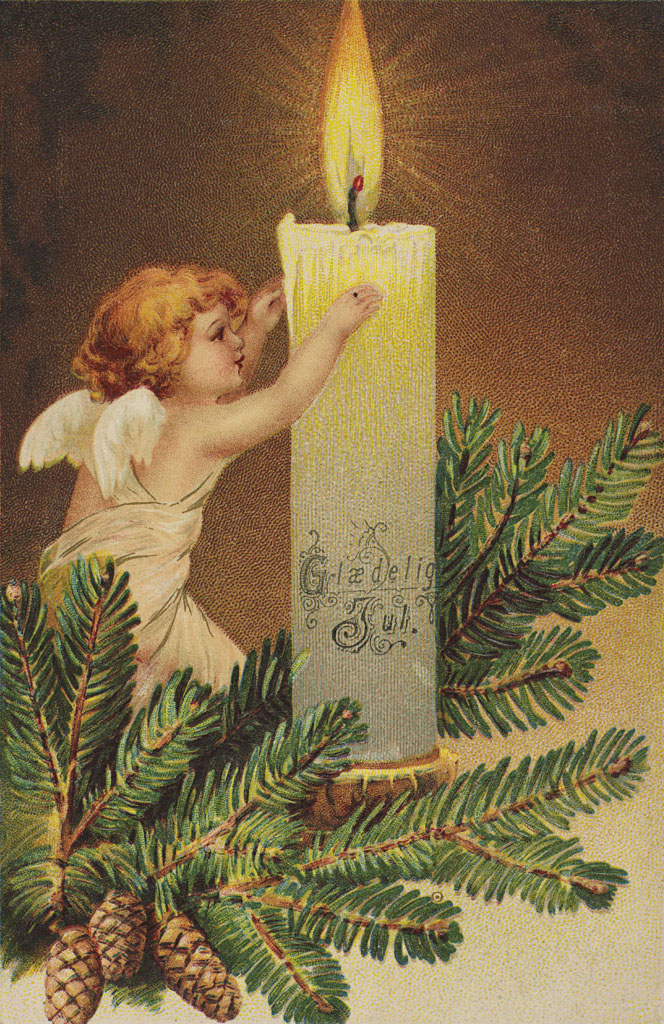
(Nasjonalbiblioteket from Norway – Glædelig Jul, CC BY 2.0)
Your handwriting may be similar to other people, but there are those few details that make it unique. So, sending a handwritten Christmas card with a nice image and words to a dear person makes everything more personal, special, and unique.
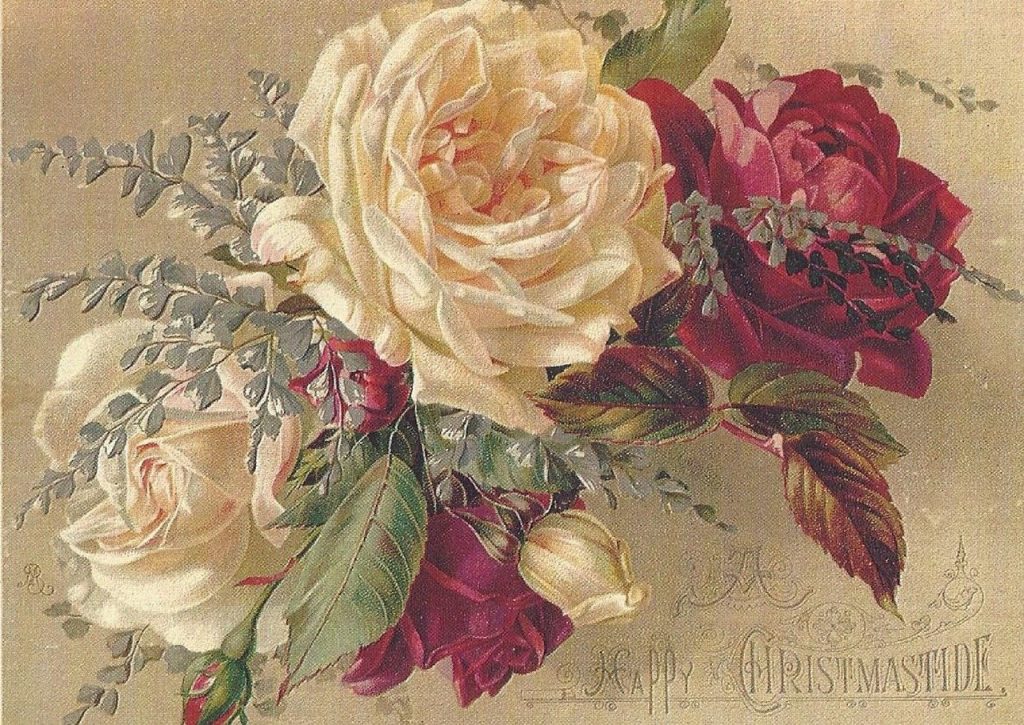
Carefully crafted, with nostalgic images and text that “fills the soul with joy”, it’s no wonder why 19th century Christmas cards are considered a little pieces of art.
“The lettering was not left to chance, or reduced to the bare simplicity of a label in ordinary type, obviously an addition to the design, but was planned to accord with it. The colours which distinguish this class of decoration are unusually happy. Pale blue lettering on sage green ground, citrons, olives, and tertiary colours were employed much as they were used by the so-called aesthetic school of furnishers of the same period.”
Of course, when we talk about seasonal holidays, there are plenty of other beautiful things we can see during this time of the year. But the attractive and eye-catchy details are those little things that elevate everything. So, once upon a time, same as today, some of them caught attention, but others “blended with the environment” making every house brighter, every gathering more joyful, every holiday merrier.
Happy Holidays and Enjoy Your December!
Ivana Tucak, Editor-In-Chief
